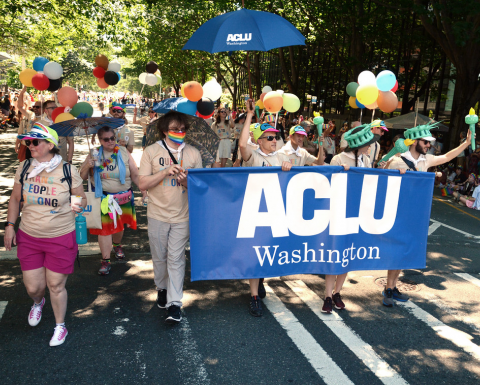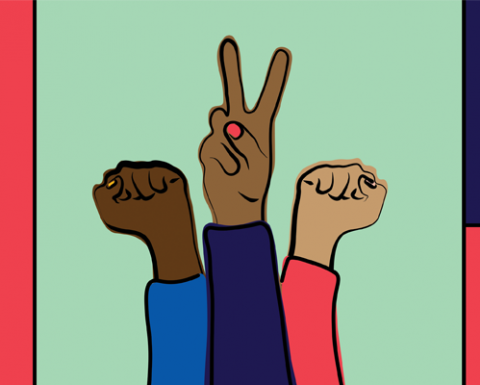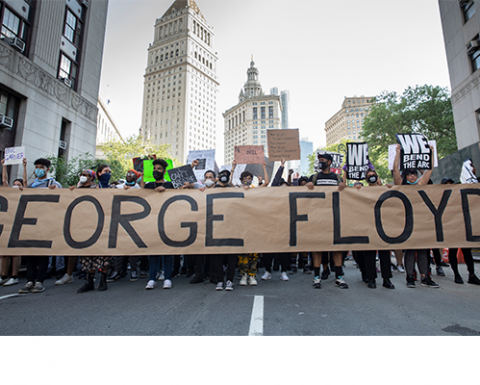Published:
Friday, October 28, 2022 When it comes to public safety, there are two beliefs guiding us this election season: 1) We all deserve a safe community, regardless of the color of our skin, our income, or zip code, and 2) we can achieve safety for all without more policing, excessive punishment, or fearmongering tactics that justify those ends.
Several politicians have distorted facts and preyed on the public’s fears to convince voters to support recycled and failed ideas that do not prevent crime. These officials claim crime is skyrocketing because of commonsense police reform and that our cities are dangerous. They suggest the only way to fix our problems is to budget more of our cities’ limited resources to law enforcement. But as we learned from the failed strategies of the 1980s and 1990s – we can’t arrest our way out of complex social challenges.
We know what keeps us safe: It’s living in communities where all of us have what we need, from mental health supports, to social services, to proven, community-based violence prevention programs. Investments in housing, health care, jobs programs, education, after school programs, gun control, environmental design, and violence interruption programs have all been proven through empirical research to quantifiably reduce violence.
Fearmongering tactics and hysteria aren’t new. Each election cycle, politicians sell to voters an apocalyptic vision of the world that doesn’t align with reality. The reality continues to be that, while rates of some types of crime have increased in the state,[1] various increases and decreases in crime categories are part of a national trend[2] which occurred before our state passed police accountability measures or drug reform policies. Therefore, these policies could not have caused these increases. It’s also true that, thanks to these policies, fewer Washingtonians lost their lives to police violence in 2021, and fewer Washingtonians are now cycled through the criminal legal system over substance use disorder, which is a public health issue.
This progress is threatened by tough-on-crime approaches that decades of research have shown fail to keep people safe and only further criminalize communities — particularly communities of color. Decades ago, government budgets shifted priorities significantly from community health and wellbeing to policing and incarceration. Our law enforcement agencies have the tools they need to do their jobs. Adding more money to their already outsized budgets will not prevent crime. If that were the case, the already lopsided spending would have been effective, and there’d be no need for this cycle of fearmongering in our politics.
This isn’t to say we should not be concerned about the safety of our communities – we absolutely should be. But it’s time to admit we can’t just arrest, jail and punish our way to safety. We are calling on leaders to be innovative and invest in the communities they represent.
Investing in a community’s needs is the most effective way to prevent crime. It doesn’t mean increasing police budgets while neglecting other services. It doesn’t mean denigrating the most vulnerable people in our communities, such as those dealing with substance use disorders or our unhoused neighbors, and trying to sweep them out of sight. It doesn’t mean throwing money at failed technologies to further surveil already overpoliced communities.
Investing in a community means hearing from our most vulnerable neighbors, listening to their solutions, and delivering on them, ensuring they feel secure and supported so that everyone can have a place to sleep at night and provide for themselves and their loved ones. If the health, safety, and welfare of a community is paramount, that must be true for everyone in a community.
Vote by your values this election season, and not by your fear. You can reject misinformation and fearmongering tactics with your vote. Through your vote, you can show leaders it’s time to prioritize real solutions over failed policies.
Several politicians have distorted facts and preyed on the public’s fears to convince voters to support recycled and failed ideas that do not prevent crime. These officials claim crime is skyrocketing because of commonsense police reform and that our cities are dangerous. They suggest the only way to fix our problems is to budget more of our cities’ limited resources to law enforcement. But as we learned from the failed strategies of the 1980s and 1990s – we can’t arrest our way out of complex social challenges.
We know what keeps us safe: It’s living in communities where all of us have what we need, from mental health supports, to social services, to proven, community-based violence prevention programs. Investments in housing, health care, jobs programs, education, after school programs, gun control, environmental design, and violence interruption programs have all been proven through empirical research to quantifiably reduce violence.
Fearmongering tactics and hysteria aren’t new. Each election cycle, politicians sell to voters an apocalyptic vision of the world that doesn’t align with reality. The reality continues to be that, while rates of some types of crime have increased in the state,[1] various increases and decreases in crime categories are part of a national trend[2] which occurred before our state passed police accountability measures or drug reform policies. Therefore, these policies could not have caused these increases. It’s also true that, thanks to these policies, fewer Washingtonians lost their lives to police violence in 2021, and fewer Washingtonians are now cycled through the criminal legal system over substance use disorder, which is a public health issue.
This progress is threatened by tough-on-crime approaches that decades of research have shown fail to keep people safe and only further criminalize communities — particularly communities of color. Decades ago, government budgets shifted priorities significantly from community health and wellbeing to policing and incarceration. Our law enforcement agencies have the tools they need to do their jobs. Adding more money to their already outsized budgets will not prevent crime. If that were the case, the already lopsided spending would have been effective, and there’d be no need for this cycle of fearmongering in our politics.
This isn’t to say we should not be concerned about the safety of our communities – we absolutely should be. But it’s time to admit we can’t just arrest, jail and punish our way to safety. We are calling on leaders to be innovative and invest in the communities they represent.
Investing in a community’s needs is the most effective way to prevent crime. It doesn’t mean increasing police budgets while neglecting other services. It doesn’t mean denigrating the most vulnerable people in our communities, such as those dealing with substance use disorders or our unhoused neighbors, and trying to sweep them out of sight. It doesn’t mean throwing money at failed technologies to further surveil already overpoliced communities.
Investing in a community means hearing from our most vulnerable neighbors, listening to their solutions, and delivering on them, ensuring they feel secure and supported so that everyone can have a place to sleep at night and provide for themselves and their loved ones. If the health, safety, and welfare of a community is paramount, that must be true for everyone in a community.
Vote by your values this election season, and not by your fear. You can reject misinformation and fearmongering tactics with your vote. Through your vote, you can show leaders it’s time to prioritize real solutions over failed policies.




